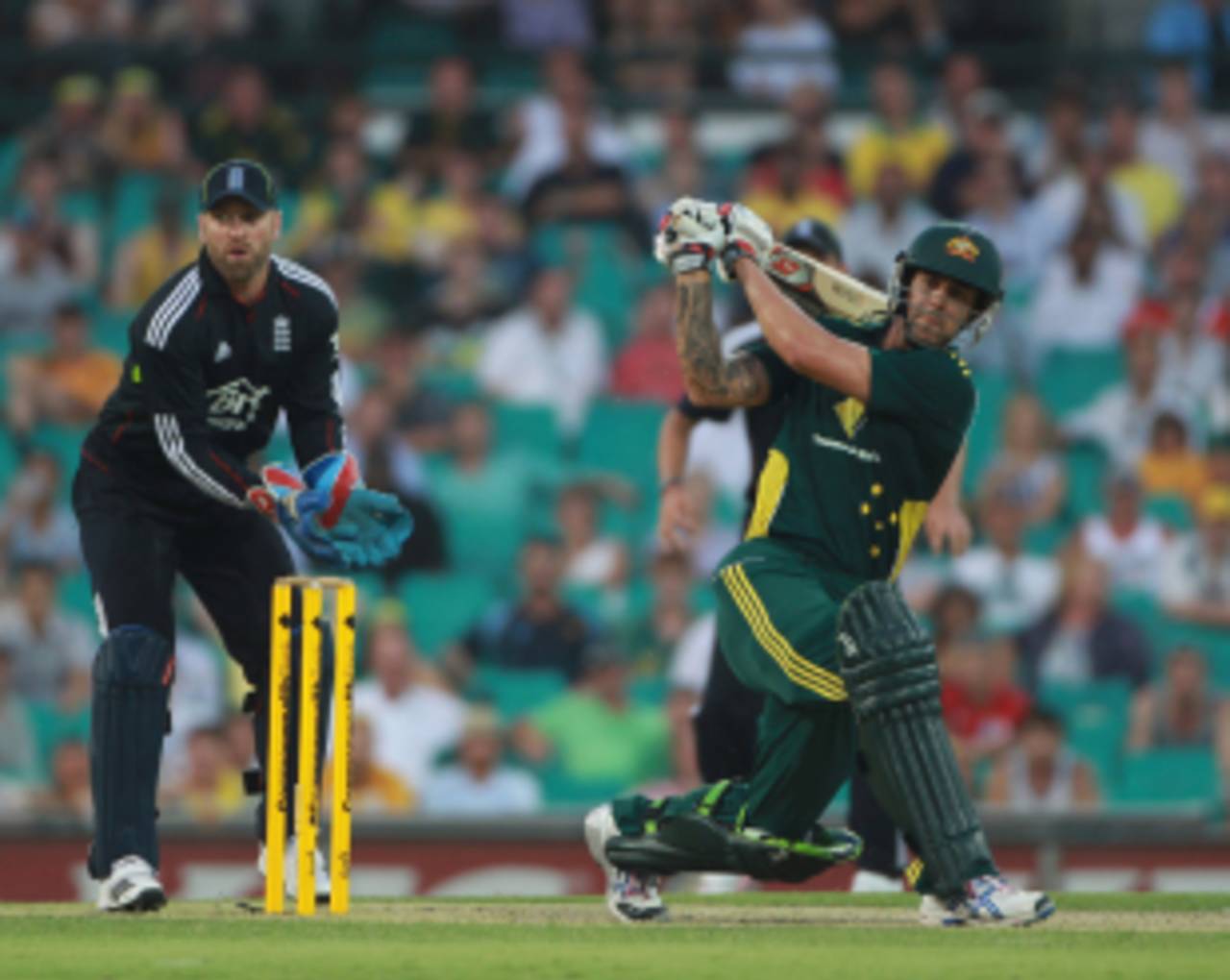The month of the World Cup is upon us and England and Australia are still playing each other. Many scandals and a few unfortunate natural calamities have come and gone since they locked horns and now only the accents need to be swapped. But instead of being dull and predictable, a performance with tired lines, it continues to enthrall, especially with the differing approaches to batting over 50 overs.
Since the arrival of the batting Powerplay, teams have tended to go back to the older style of preserving wickets for the slog. Certainly the bowling Powerplay isn't attacked with the gusto a Saeed Anwar or a young Sachin Tendulkar used. England reflect that with the more measured style of Andrew Strauss and the astonishingly under-feted Jonathan Trott. But Australia, doubtlessly influenced by the success of the aggressive style seen from Matthew Hayden and Adam Gilchrist, prefer to go for it straightaway, with Shane Watson and Brad Haddin.
England's is the more interesting approach, one that South Africa seem inclined to follow as well. If you have wickets in hand and a Powerplay in the last 10 overs, teams are backing themselves to score close to a hundred. Even an asking rate of nine doesn't seem to ruffle many sides, and surely this is the first obvious influence of Twenty20 cricket. But it isn't as if teams are dawdling in the first 20. There seems to be a return to the slightly more classical style of batting, but with the more aggressive mindset, and dare one say the decline in wicket-taking skills of bowlers, the runs are coming faster.
It has been particularly fascinating to watch Hashim Amla and Trott, both perhaps from the same school of batsmanship. A decade or so ago, neither would have found a place in a limited-overs side, it was a time when even someone of the pedigree of Rahul Dravid had his place constantly questioned. But these two, without playing an impure shot, are sometimes achieving strike rates of around 100. Both have grown to become key one-day players.
I wonder if we will see more players like this flourish in the subcontinent during the World Cup. Will the Trott-Amla method be the way ahead or will teams, aware of the fact that the ball might stop and turn later on, turn on the heat straightaway? Will the likes of Virender Sehwag, Tillakaratne Dilshan, Tamim Iqbal and Shane Watson be the stars or will teams preserve wickets and count on the Powerplay at the end? My feeling is that teams who bat deep will nominate one man at the top of the order to go for it but let the other opener and the No. 3 play the more classical way.
My feeling is that in the World Cup, teams that bat deep will nominate one man at the top of the order to go for it but let the other opener and the No. 3 play the more classical way
The approach in the middle overs will be worth watching too. On the subcontinent, and increasingly everywhere, the slower, gentler tweakers make their appearance around this time, when the non-aggression treaty is being adhered to. With the ball stopping a bit, and the need to conserve wickets being critical for the batting side, these bowlers can slip a few quiet overs in. I'd like to see teams challenge that a bit and from that point of view it was nice to see Mitchell Johnson sent up to No. 4 in the sixth ODI
in Sydney.
The thinking is quite simple: throw in one of your lesser-valued batsmen, and therefore a lesser wicket, to take on the fourth, fifth and sixth bowlers of the opposition. If the attack comes off, you force the better bowlers to return and weaken the bowling in the third Powerplay. If it doesn't come off, you've lost only a bit. It is the good old pinch-hitter theory, but in the middle overs. Would it be possible, I wonder, to see a Harbhajan walk in during the 30th over? Quite obviously you can only do that if you have had a good start and have wickets in hand, but then that is the basis of almost any batting plan. The importance of the openers hasn't diminished yet in any form of the game.
I wonder if any other Twenty20 influences will be noticed. Certainly the paddle is now an essential shot, with third man and fine leg increasingly inside the circle, but the Dilscoop has rather quickly gone out of fashion. However I will be surprised if the reverse-sweep and even the switch-hit - which I believe shouldn't be allowed - isn't a crucial tactical weapon.
You could look at this World Cup and think it is predictable and say, "I know who's going to be standing on March 21" or you could search for little nuances that could indicate shifts in thinking. It will still be a great World Cup to watch. On most days anyway.
Harsha Bhogle is a commentator, television presenter and writer. His Twitter feed is here
